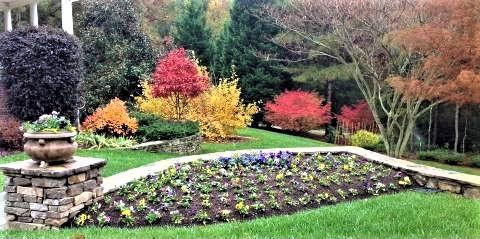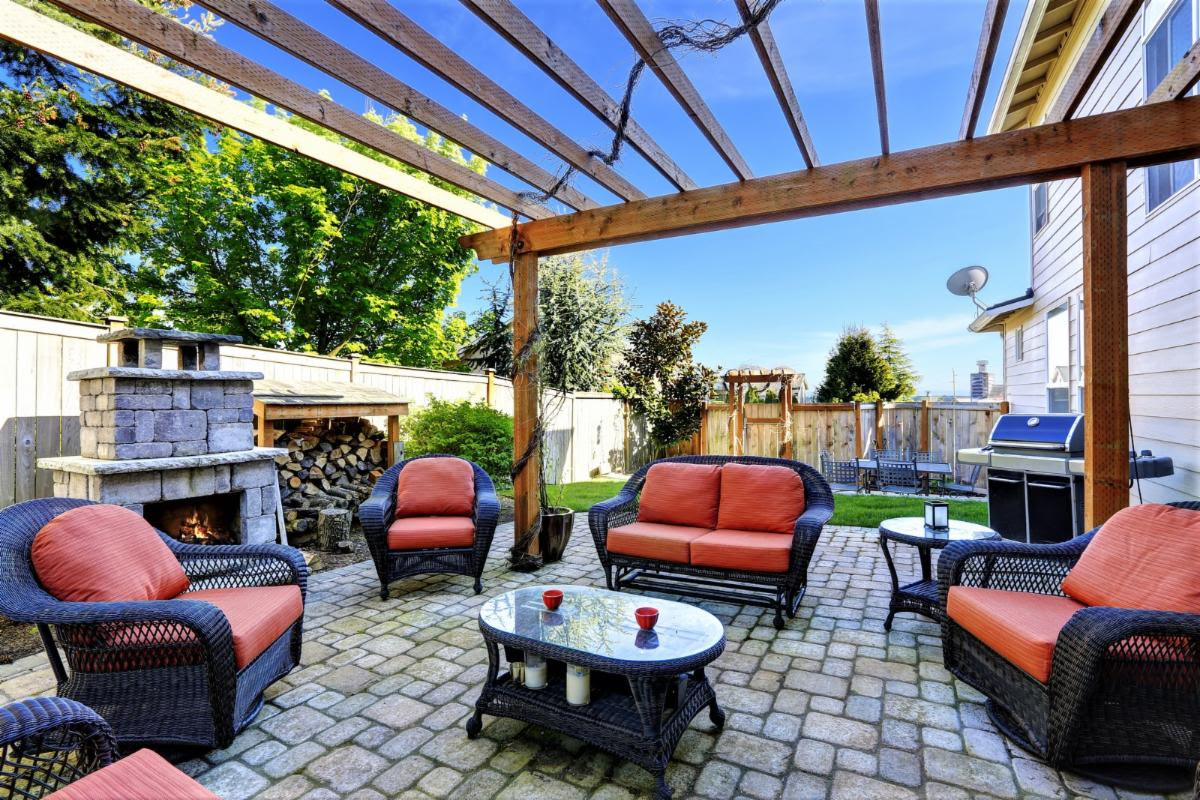
Ultimately your landscape should be an extension of your home, a place to relax and destress. With a little planning and intention, you can match the elements of design to your personal goals for your garden and landscape. Creating a landscape you can use, enjoy, and relax in are all important things to consider. An appropriately planned landscape design will match the elements of designs with natural and architectural features of your home, and enhance the beauty of your landscape, increasing your quality of life. These days home can become much more than where you relax and rest. Home is now where you work or where your kids go to school and it’s important to maintain your landscape in a way that it reduces your stress level. With landscape renovations, you can regain the ability to relax and recoup at your home while adding value to your property.
Before you hire a landscaping company it’s a good idea to take an inventory of your personal goals for your landscape. You will also want to address any trouble spots, structural, visual and environmental issues your property has like slope or drainage issues. The elements of design can serve as a tool for addressing and improving your landscape.
Line
Line can be applied in various ways to the landscape. The lines of sight from your home into your yard and visa-versa are important to consider when designing your landscape. Where your property sits in relation to the horizon line and the tree line are prominent areas that influence the overall feeling of your outdoor spaces. Lines are also important when you design the transitions between hardscapes and garden beds, like paths and walkway to greenspace and in the edging of turf areas.
Shape and Form
Shape and form are present in a variety of garden features. You need to realize that landscapes are dynamic outdoor spaces, and that plants will change shape and form as they mature. A garden will look very different the first year it is installed than after ten years in the ground. This is why maintenance and plant selection is so crucial to your landscape’s long term health, and your ability to enjoy it.
Shape and form are very critical when determining what hardscape features you want. A large deck can dwarf your garden areas. An expansive turf can make a small yard appear bigger. This is a crucial element to focus on to make the most of your existing space based on what areas you want to enhance what you want to minimize.
Direction
The direction of the sun’s path over your home is also an important consideration when assessing your landscape. Of course, you need to be aware of sun exposure for your plants, but there are other direction considerations. West and South sides of homes typically get the most sun and heat, as long as they are not obstructed by another structure or building. The North side is often a challenge in the Northwest, due to more shade and that can coincide with wet soggy soils in the winter. It is also important to know the weather patterns on your property in relation to your structure so you can plan seating areas, structures and plant trees out of wind patterns and sun exposure properly.
Direction in the landscape has to do with the way you and your family move through your space. If you are designing an outdoor eating or entertaining area it’s important to make your indoor kitchen accessible easy to transition between gathering when you need inside your home and taking it to your outdoor space. Recreation areas also need to be placed in a way to minimize disruptions between play and rest. For example, it’s best not to install a basketball hoop near a calming water feature. Or a dog run that will get muddy in the winter adjacent to a formal seating area. Again, every property is unique and skilled landscape designer will have experience to consider all the directional needs of your landscape.

Texture
Texture can play off in both your garden and hardscapes. The types of plants you choose can have a light or heavier texture depending on their color, leaf density and size. In the hardscape, using smooth concrete will give an elegant formal look, whereas rough natural stone feels more rustic and organic. Texture can give the illusion of movement and help to break up harsh lines by softening the transitions between plants and structures.
Color
This is where the preferences of the homeowner really come into play and an opportunity to be creative! Some people prefer more neutral colors when it comes to plants and more formal areas for outdoor seating, while others get excited by vibrant and contrasting colors. It really is a personal opinion. Landscapes that look well balanced have a consistent application of either similar or vibrant colors that maintain visual interest throughout the property. You should also consider how plants change throughout the seasons. To have a vibrant landscape you can add color by choosing plants that bloom at different times and during different seasons. As we go into fall, trees with fall color get the spotlight for visual interest, but you don’t neglect using plants that bloom in the spring and summer.
Value
Every garden has that one darker corner or large tree that shades the space. Value can be attributed to the way the light lays over the landscape depending on the time of day or your plant palette of lighter or darker plant foliage and flowers you prefer. You can lighten up areas and draw attention to them by installing up lights on trees or water features. The value of your plants will also change throughout the seasons. In Spring, gardens have a bright new look of fresh new foliage on trees and shrubs. Once you make it to Fall, trees morph into fall color, evergreen leaves are settled into a deeper green in contrast to the new growth you observe in Spring.
Space
Defining your space and the space between your property and neighbors is a frequent request. This goes hand in hand with creating privacy between neighbors. The right fencing or hedging can help you define your outdoor space to screen away close-by windows, and things like work spaces or recycling/garbage containers.
As long as your garden and landscape functions for your needs there really is no hard and fast rule when it comes to design elements in your landscape. A good landscape designer will work with you to create the design that makes your personal aesthetics with functional details to create a true oasis to complement your life and help your house feel like home.
Contact us today to begin your landscape renovation this Fall.

